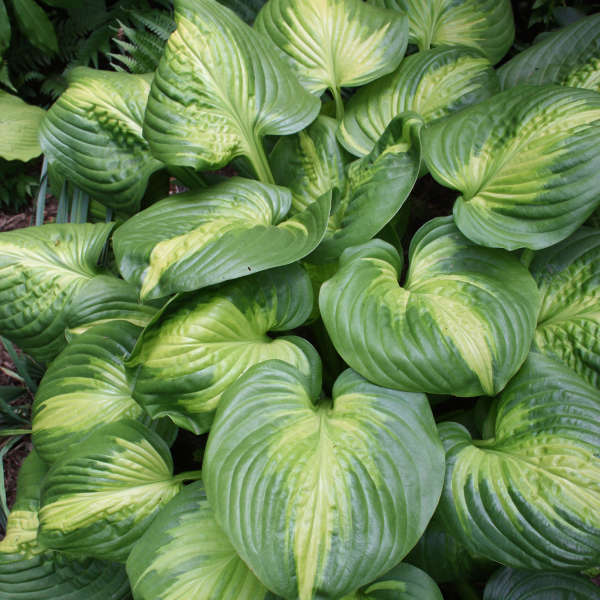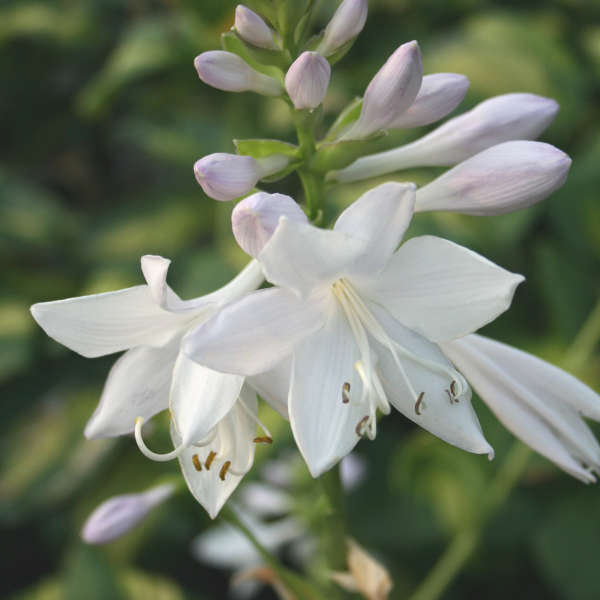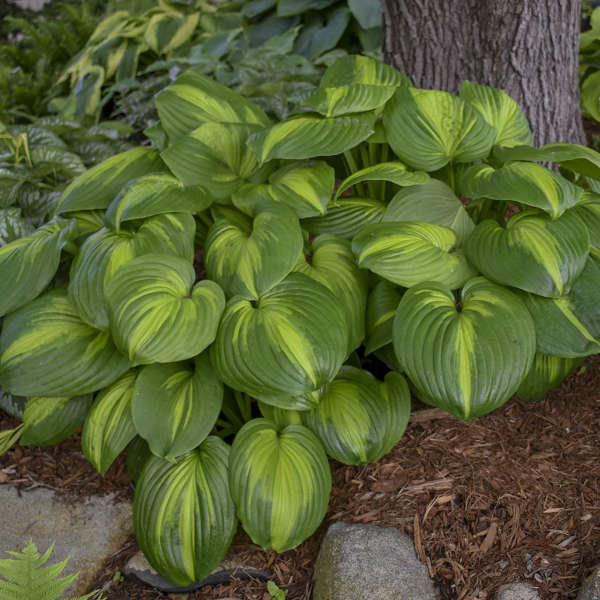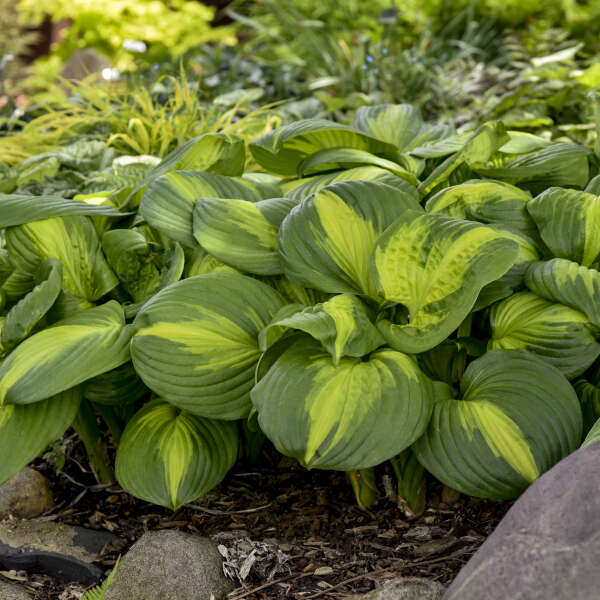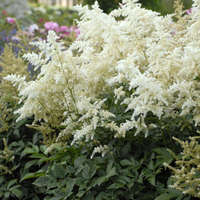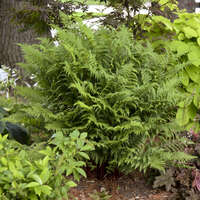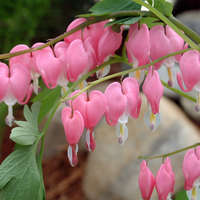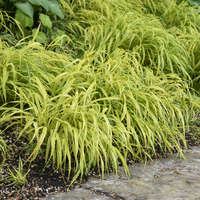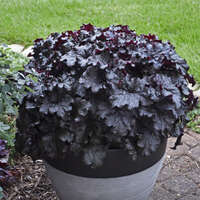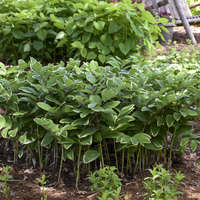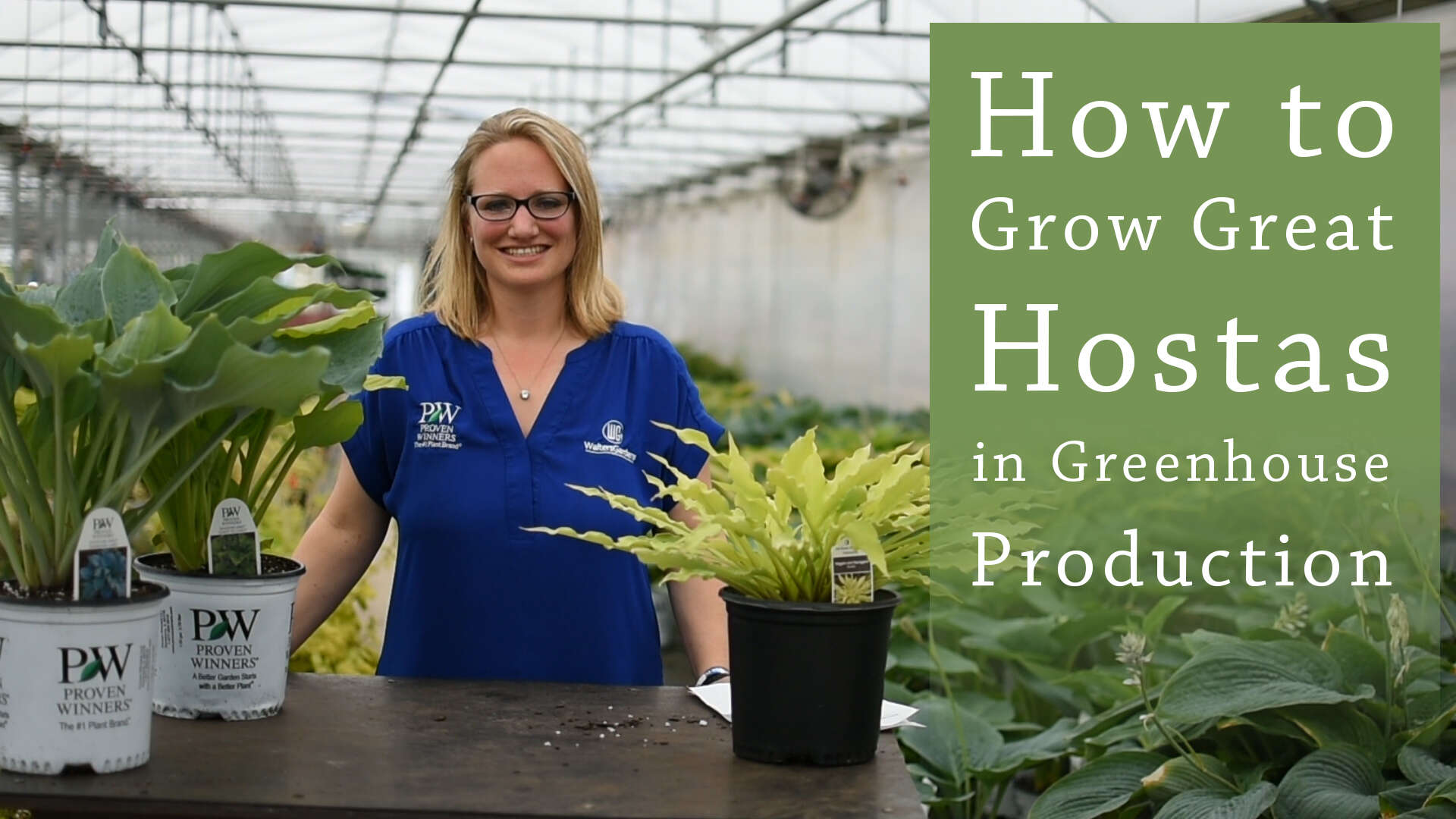Hosta 'Cathedral Windows' PP17295
Common Name: Hosta
Improving on his award winning hybrid ‘Stained Glass’, this new selection from Hans Hansen is a large, tetraploid conversion.
Like a brighter version of ‘Holy Mole’, ‘Cathedral Windows’ quickly forms a large clump of rounded, bright gold leaves with very wide, dark green margins. As the leaves mature, they become dome-shaped.
Large, fragrant, near-white flowers are produced well above the foliage in late summer.
Hostas are exceedingly popular perennials in today's gardens due to their versatility in the landscape. Their subtle colors, tall flower scapes, and broad, coarse leaves fill a niche in garden designs that few other plants can achieve. Their large leaves provide excellent coverage for dying bulb foliage. Hostas also grow well in city environments where the air may be polluted by car exhaust, etc.
